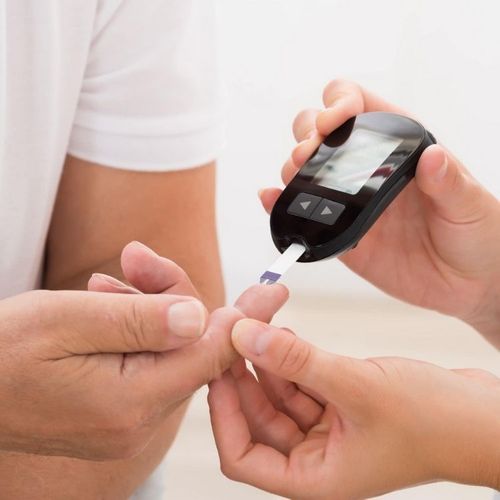Although all carbohydrates share the same basic chemical composition, all carbohydrates not equal. Eating the right type of "carbs" will help you control your weight. . .cut your risk for heart disease and diabetes...and minimize your risk for the low blood sugar condition known as hypoglycemia.
More good news: Cakes, cookies and other carbohydrate-rich foods that are often considered taboo can be part of a healthful diet-in moderation.
What Are Carbohydrates?
People often describe bread, potatoes, pasta and certain other foods as carbohydrates. Actually, carbohydrates are a chemical constituent of many different foods. They encompass...
The simple sugars glucose and fructose.
More complex sugars, such as sucrose and lactose, which are made up of two simple sugars that are linked.
Starches, even more complex molecules, which are made up of thousands of linked glucose molecules.
Bread contains carbohydrates, but it also contains protein, fat, vitamins, minerals and other nutrients.
Milk isn't generally thought of as a carbohydrate, but it contains significant amounts of lactose...as well as protein, fat, calcium and, of course, water.
Carbs And Your Body
The digestive process converts carbohydrates into glucose (blood sugar). That's the basic "fuel", used by every cell in the body.
As the amount of glucose that's circulating in the bloodstream rises, the pancreas boosts its production of insulin. That's the hormone needed to "burn" glucose for energy.
Foods that have roughly comparable carbohydrate content can have very different effects on blood sugar. Some carbs raise blood sugar levels sharply. Others have little effect.
To gauge a particular food's effect on blood sugar levels, scientists use what is known as the glycemic index. At the top of this 100-point scale is glucose. Consumption of glucose causes the sharpest rise in blood sugar. Other foods fall lower on the scale. The higher a food's glycemic index, the greater its effect on blood sugar levels
The chief determinant of the glycemic index of a particular food is the speed at which it is digested. Carbs that break down into glucose quickly raise blood sugar sharply. Slow-digesting carbs keep blood sugar levels on an even keel.
What determines the speed of digestion? A food's particle size. The smaller the particles, the faster the food is digested and the higher its glycemic index.
Milling, baking, cooking in water and other forms of processing increase starch gelatinization, which increases the glycemic index. That's why processed foods have high glycemic indices.
Example: Canned pasta, which is cooked for a long time, has a higher glycemic index than pasta cooked al dente
Glycemic Index And Health
The body operates best when blood sugar stays at a constant level. Increasing the proportion of low-glycemic index foods in your diet...
Promotes weight loss. Carbs are natural appetite suppressants. Low-glycemic index foods remain in the digestive tract longer and so provide a lasting feeling of satiety.
Lowers the risk of diabetes. The risk of developing adult-onset (type 2) diabetes is determined largely by heredity. But diet may be what determines which at-risk people go on to develop diabetes.
Cells that are repeatedly subjected to surges of insulin eventually become less sensitive to its effects. Eventually, the pancreas can't produce enough insulin to overcome the cells, insulin resistance... and diabetes develops.
By preventing blood sugar surges, low-glycemic index foods help forestall insulin resistance. A Harvard study that involved more than 100,000 people found that a high-glycemic index, low fiber diet more than doubled diabetes risk.
If you have diabetes, eating a low-glycemic index diet helps keep glucose levels-and therefore, insulin levels-in check. That helps prevent insulin resistance, allowing insulin or anti diabetes drugs to work more efficiently. This may help reduce the risk of complications, such as kidney disease.
Guards against heart disease. Because low-glycemic index foods help prevent diabetes and obesity, they reduce the risk of developing heart disease.
Low-glycemic index eating also fights heart disease by raising the levels of HDL ("good") cholesterol, which carries fat away from the coronary arteries. And while a carbohydrate-rich diet can boost heart attack risk by raising triglyceride levels, this won't occur if most of the carbs have a low glycemic index.
Evidence: In the famed Harvard Nurses' Health Study, women who ate a low-glycemic index diet had half the heart attack risk as similar women who consumed many high-glycemic index foods.
Reduces the risk of hypoglycemia. Some people experience weakness, drowsiness and/ or anxiety after eating-because abnormally high insulin levels cause blood sugar to fall precipitously. Low-glycemic index eating helps dampen these swings.
Low Glycemic Eating
You needn't eliminate all high-glycemic index foods from your diet. Just include enough low glycemic index foods to bring down the average glycemic index.
Breakfast: Choose oatmeal (glycemic index, 49). . .muesli (56)...or cereals like Kellogg's Bran Buds with Psyllium (45).
Bread: Whole-grain pumpernickel (51)'.. sourdough ( 52). . .and stone-ground whole wheat (52) have lower glycemic indices than whole wheat or white bread (69 to 70).
Starches: Pasta (30 to 45) should be a mainstay of your diet. Pearled barley (25) and bulgur (48)have lower glycemic indices than white rice (72). Boiled potatoes (52) are better than baked potatoes (85) or instant mashed potatoes (86).
Legumes: Lentils (30), chickpeas (33), kidney beans 27) and other beans are low in fat and high in fiber.
Fruits and Vegetables: Fruits have glycemic indices ranging from 40 to 55. Vegetables ate a bit higher, but their carbohydrate content is too low to affect blood sugar very much.
Snacks: Flavored, low-fat yogurt is a good snack-it has a glycemic index of 33. While pastries, candy and ice cream are too fatty and calorie-dense to be more than an occasional indulgence, their glycemic indices are the same as the glycemic index of bread.
You might expect table sugar and honey to have the highest glycemic indices. In fact, each has a glycemic index that is approximately the same as white or whole-wheat bread.
Explanation: Honey and table sugar break down into fructose as well as glucose. Fructose is converted into glucose very slowly.
